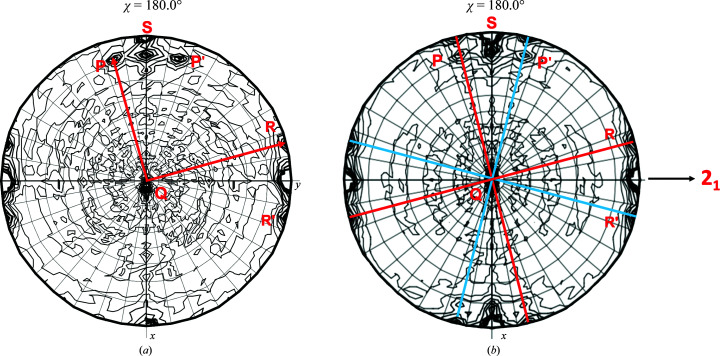Figure 1.
Noncrystallographic symmetry in the crystals of FtFBPase. The self-rotation function (SRF; χ = 180°) of the crystallographic data for the monoclinic crystals of FtFBPaseII was calculated and is shown. (a) Crystal A. It was impossible to characterize/refine a twinning law or fraction from this crystal. Uncorrected structure factors were used to obtain an initial structure. The SRF indicated the presence of two sets of nearly orthogonal twofold axes (P, Q, R and P′, Q′, R′). (b) The diffraction data from crystal B were used to refine the structure of FtFBPaseII. The SRF consists of two sets of three nearly orthogonal twofold axes. The lack of perfect centrosymmetric symmetry reflects the two twinning fractions of 0.567 and 0.433 for the crystal. The structure refinement included refinement of the twinning fractions (Table 1 ▸). The two sets of nearly orthogonal twofold peaks of the SRF were shown to correspond to the following dimer relationships by model calculations using the appropriate structure factors as follows: A–B/C–D (P), A–D/B–C (Q) and A–C/B–D (R). In addition to these orientations of the tetramers, there could be other orientations in the crystal along the planes indicated in (b), as indicated by the blue and red lines. The annotated twofold peaks S along the crystallographic x axis (top) correspond to a packing peak of the two tetramers in the unit cell suggesting nearly (i.e. pseudo) orthorhombic symmetry.

